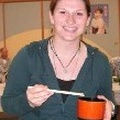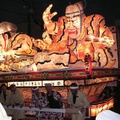My friends from Tokyo came to visit me in Aomori last summer, and the first thing they said was, “Wow, I feel like I’m back in California!” I was a bit confused because I’m from California and I definitely did not have that reaction when I arrived in Aomori. My first reaction to Aomori was, “Wow, there’s nothing but rice fields!” I’ve heard there are rice fields in California, but I’ve never seen them. So I couldn’t understand what my friends were talking about.
Metropolitan Japan, specifically Tokyo, is very crowded. You can’t walk five feet without bumping into somebody. There are buildings as far as the eye can see. Shopping areas are in abundance and you can find anything you ever thought you needed and more. The only fallback is the lack of nature. Trees are a bit of an anomaly because they are so few and far between. Most people have to settle with makeshift balcony gardens because apartments are the norm. Any house with room for a garden in the front means that it is old and very expensive.
Aomori is just the opposite. Outside of the city, in the countryside like Aomori, you can walk twenty minutes without seeing a single person. Shortly after I arrived in Aomori I got lost on my way home. I decided I would try and take a short cut using the back roads. Boy that was a mistake! I drove around for nearly half an hour and didn’t see a gas station or a convenience store, let alone anyone walking around. All I saw were rice fields and a few scattered farmhouses. Luckily I made my way home. I realized then that I truly lived in the inaka (countryside). Commerce in the inaka is sparse. Most of the buildings you see are old homes. Those that aren’t homes are never more than eight stories high. Shopping tends to be limited to a few large shopping centers in town and small boutiques.
In Aomori, you have a sense of space, air to breathe, and room to gaze. In Tokyo, however, the only room to gaze is the five feet between skyscraper buildings. Perhaps this is why my friends said Aomori reminded them of California. California offers mountains, lakes, farmland, beaches, deserts, and just about any natural setting you can think of. You can also find five lane freeways, three car garages, and houses with front lawns.
Space is the norm in both Aomori and California. The use of it, however, is different. Like California, Aomori offers mountains, lakes, farmlands, and beaches. Unlike California, you will never find a three-car garage or five-lane freeways. Aomori is one of the poorer prefectures in Japan and people cannot afford to live luxuriously. Therefore, their use of space is practical and economical. Instead of finding new track homes throughout Aomori, you find farms because that’s how people make their living. The economy is also dependent on tourists who come to see the natural beauties of Aomori.
Aomori is known for its beautiful nature. The Chinese characters for Aomori mean blue (aoi) forest (mori). During the spring, you will see posters in Tokyo promoting the cherry blossoms at Hirosaki Castle as the best in Japan. The Shirakami Mountains, a world heritage site, provides ample hiking and boasts Lake Juniko, which is a series of 33 lakes. I’ve heard the lakes’ vibrant blue color takes your breath away. Mt. Iwaki, known as Mt. Fuji’s cousin in Aomori, is a magnificent centerpiece for the plains of Western Aomori. And, of course, you cannot forget Lake Towada and Oriase gorge where you can see stunning views of waterfalls, and the third deepest lake in Japan.
My friends from Tokyo said Aomori is one of the most beautiful places they have visited in Japan. Aomori may not have a lot in terms of shopping, but I’d much rather live in a place that offers sustenance for the soul: vast blue skies, apple orchards, and blue forests.
© 2007 Allison Reed





